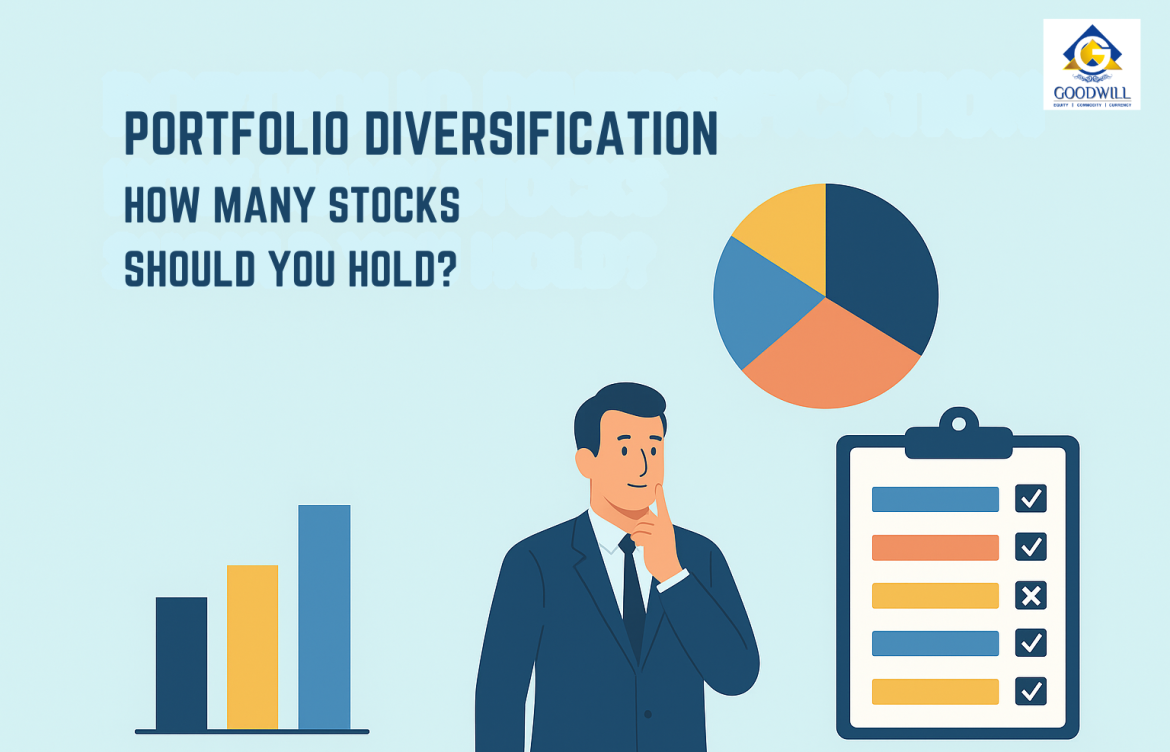
Portfolio Diversification: How Many Stocks Should You Hold?
Portfolio Diversification: How Many Stocks Should You Hold?
One of the most debated questions in investing is: How many stocks should you actually hold in your portfolio? While some investors prefer a highly concentrated portfolio of a few high-conviction picks, others believe in spreading their investments across dozens of stocks to minimize risks. The truth lies somewhere in between, depending on your investment goals, risk tolerance, and strategy.
Thank you for reading this post, don't forget to subscribe!What is Portfolio Diversification?
Portfolio diversification is the practice of spreading your investments across different assets, sectors, and industries to reduce risk. The idea is simple: don’t put all your eggs in one basket. If one stock or sector underperforms, others in your portfolio can balance the loss.
For example, if you only invest in IT stocks, a slowdown in global tech demand could hurt your entire portfolio. But if you also hold banking, FMCG, and energy stocks, your portfolio is more resilient to shocks.
Why Diversification Matters
-
Reduces Risk: Helps cushion against company- or sector-specific downturns.
-
Stabilizes Returns: Provides more consistent long-term returns.
-
Protects Against Market Cycles: Different sectors perform differently during economic upturns and downturns.
-
Encourages Long-Term Discipline: Reduces emotional decision-making during volatility.
How Many Stocks Should You Hold?
There’s no one-size-fits-all answer, but let’s break it down.
| Investor Type | Suggested Number of Stocks | Rationale |
|---|---|---|
| Beginner | 8–12 | Easier to track and manage; avoids over-diversification. |
| Intermediate | 15–25 | Offers sectoral diversification while still manageable. |
| Advanced | 25–40 | Suitable for investors with deep research capacity and higher capital. |
| Index/ETF Investors | 1–3 ETFs | Achieves instant diversification across 50–500+ stocks. |
The Rule of Diminishing Returns
Studies suggest that after around 20–25 stocks, the benefits of diversification plateau. Beyond this, adding more stocks doesn’t significantly reduce risk but can dilute your returns and make monitoring harder.
-
Too Few Stocks (Under-diversification): Higher risk, portfolio swings with single stock performance.
-
Too Many Stocks (Over-diversification): Harder to track, returns mirror the index without extra upside.
Sectoral Diversification
It’s not just about the number of stocks but also the type of stocks you hold. A well-diversified portfolio in India might include:
-
Banking & Financials (Eg.: HDFC Bank, SBI)
-
IT & Technology (Eg.: Infosys, TCS)
-
Energy & Renewables (Eg.: ONGC, NTPC, Adani Green)
-
FMCG & Consumer (Eg.: HUL, Nestlé India, ITC)
-
Pharma & Healthcare (Eg.: Sun Pharma, Dr. Reddy’s)
-
Infrastructure & Realty (Eg.: L&T, DLF)
-
Defense & Manufacturing (Eg.: BEL, HAL)
This way, you’re not overly dependent on one sector.

Factors That Decide Your Ideal Number
-
Capital Size: Larger portfolios can spread across more stocks.
-
Risk Appetite: Conservative investors may prefer more diversification, aggressive ones fewer.
-
Time & Knowledge: Can you track 30 companies? Or are 10 quality names more practical?
-
Investment Horizon: Short-term traders may focus on fewer stocks, while long-term investors benefit from wider diversification.
Key Takeaways
-
Beginners should stick to 8–12 stocks across multiple sectors.
-
Beyond 20–25 stocks, the benefits of diversification reduce.
-
Focus not just on the number of stocks, but also quality and sector spread.
-
If you lack time for research, consider mutual funds or ETFs for instant diversification.
Final Thoughts
A well-diversified portfolio is the foundation of long-term wealth creation. While there’s no magic number for everyone, the right balance lies in having enough stocks to reduce risk, but not so many that you lose focus. Quality always beats quantity.
If you’re just starting out, aim for 10–15 carefully chosen stocks across key sectors of the Indian economy and expand as your capital and confidence grow.

